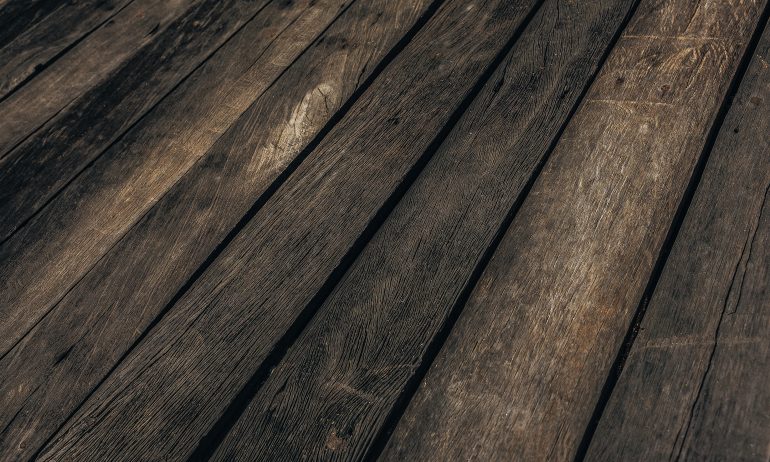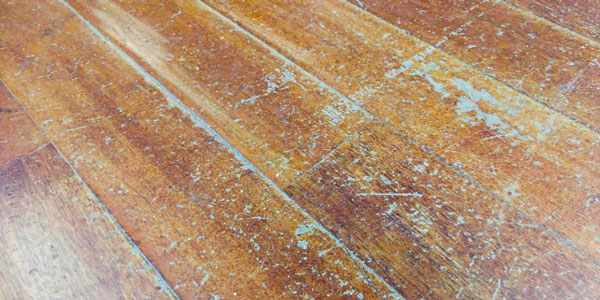Refinishing hardwood floors may give old, worn surfaces the appearance of being brand new. In some circumstances, restoring damaged flooring to its previous splendor may be the sole option. Sanding and refinishing floors may be expensive, messy, and time-consuming; thus, you should be certain that this is the best choice before you commit to it.
If your hardwood floors are still in relatively good condition, you may get away with a screening and recoating job instead, which is a quicker and less costly choice. Buffing the floors and applying a new coat of polyurethane, which has a glossy surface and preserves the wood, are the steps involved in this type of floor refinishing.
Major Scratches and Dents
It is difficult to avoid some dents and scratches when it comes to hardwood floors, particularly those in households with children or animals. But, when the damage is extensive and has gone through the poly covering and into the wood itself, the only way to show an intact surface is to sand with sufficient force so that it goes deep enough. This is not only a matter of aesthetics; once scratches are introduced into the wood, your floors become susceptible to damage from water.
Cupping
Cupping is the term used to describe the concave curve that results when floorboards fold inward from their edges. Cupping is an indication of water damage, in addition to having an unsightly appearance. This kind of damage may be caused not just by leaks and drips but also by the high humidity in the air. Sanding can easily fix minor cupping, but if individual floorboards are sticking up or splitting, you will need to replace those floorboards individually.
Splinters
If walking barefoot on your hardwood floors increases the risk of unpleasant splinters, this is a sign that the sealant has worn away, showing that the underlying wood has been harmed. Sanding is the only method to get beneath that damage to restore smoothness and safety, and after that, a fresh coat of sealant should be able to safeguard this new surface for many years to come.

Gray Floorboards
Floorboards that have gone gray indicate water damage, even though this color change is sometimes misinterpreted as a lovely patina that gives character to older houses. Those floorboards that were originally gray should appear brand new after the refinishing process, but you should be aware that any boards that have become black are beyond repair and will need to be replaced.
Water Stains
The presence of stains on the floors is unmistakable evidence of water damage. Although most water stains may be avoided by simply blotting up spills as soon as they occur, hardwood floors can eventually get discolored if air conditioner drips, plumbing leaks, pet accidents are not treated. Refinishing the wood is necessary after these telltale stains develop so that the clean wood underneath them may be shown and protected.
Fading and Discoloration
The sun's warmth in a room is seductive, but excessive exposure may bleach and discolor hardwood floors over time. Refinishing the floor can restore the floor's consistent color if you have seen fading or color changes on the floor near glass doors and windows.
What Should I Do Now?
If the finish on your hardwood floors needs to be refinished, you may do this task in one of two primary ways: hire specialists or do it yourself. If you are physically up to work, have the time to learn about refinishing procedures, and are sure that you have the necessary skills, equipment, and supplies to perform a competent job. A do-it-yourself approach might be a viable choice.

What Is The Typical Price Range For Refinishing Hardwood Floors?
According to the website HomeAdvisor, hiring a professional to refinish hardwood floors may range from $3 to $8 per square foot. This often amounts to a total price tag of under $1,100 to approximately $2,500. Nonetheless, the website adds that the expenses may sometimes go beyond $4,000 in rare cases. This enormous price range is partly attributable to the fact that individual homes may vary greatly in size and layout: Costs tend to go up with the addition of smaller elements like closet interiors, nooks, or staircases, whereas bigger open spaces often result in reduced prices per square foot.
According to HomeAdvisor's estimates, the equipment and supplies needed to do the task on your own might be reduced to anywhere from $500 to $1,000. The rental of a sander alone may cost between $50 and $80 per day, according to the business, and the job may take more than one day to complete.




